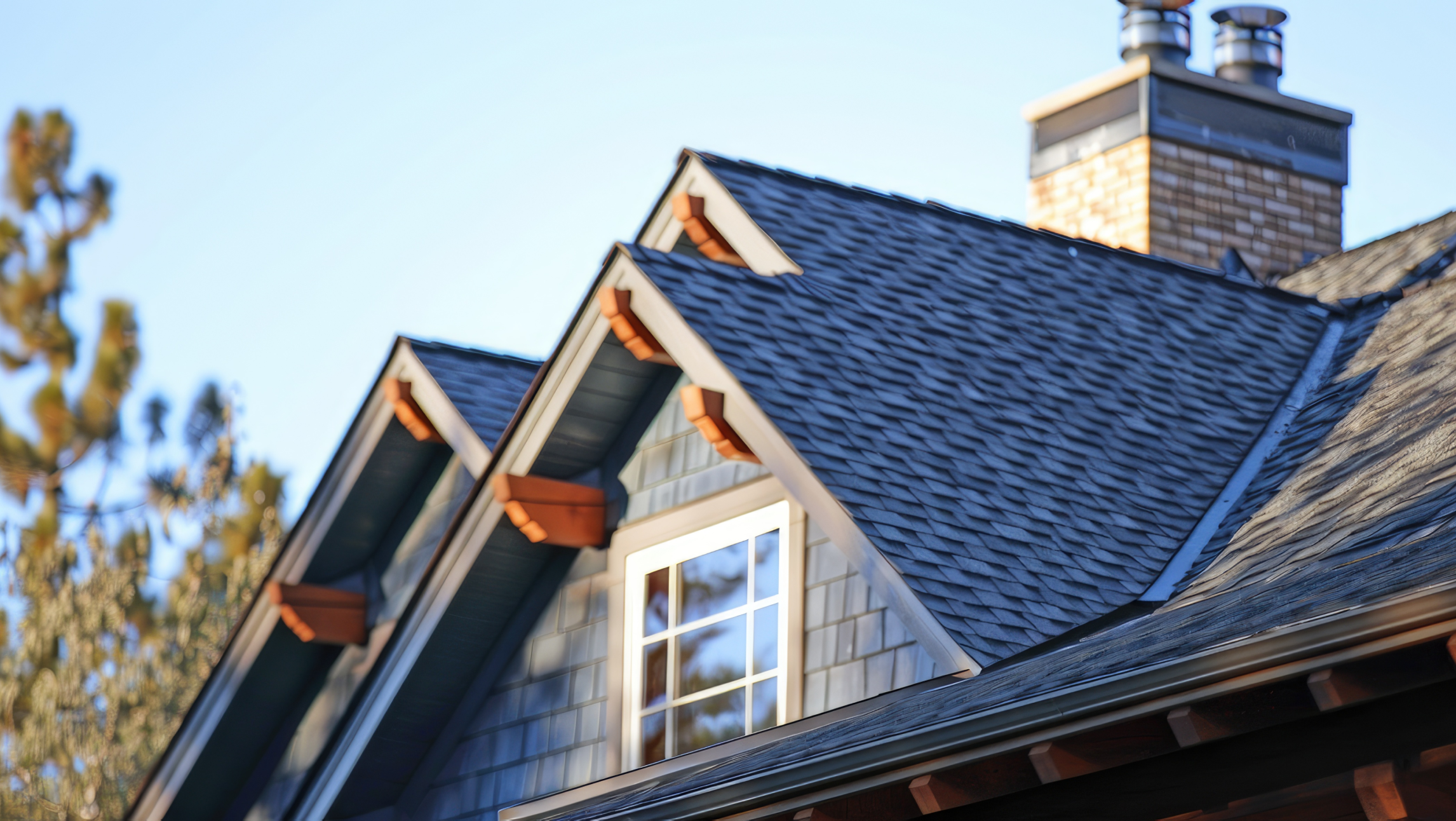Houston’s climate is no stranger to powerful storms, especially during hurricane season. The Gulf Coast’s unique blend of warm, moist air and sudden cold fronts can create severe weather patterns that wreak havoc on homes. Among these, high winds pose a particular threat to the integrity of your roof. But how do you know if your roof has been damaged by high winds? More importantly, how can you take action before minor damage turns into a costly disaster? Let’s break down the signs of roof damage caused by Houston’s high winds and what you can do about it.
The Importance of Early Detection in Houston’s Climate
Houston homeowners are accustomed to unpredictable weather patterns, especially during hurricane season and the notorious summer storms. When strong winds strike, they can dislodge shingles, damage the underlying structure, and create opportunities for water to seep into your home. If these issues aren’t addressed promptly, what starts as a minor problem could quickly escalate into the need for full roof replacement.
Beyond the immediate risk of water damage, Houston’s humid climate accelerates the growth of mold and mildew. This means that even minor roof damage can lead to interior issues, affecting not just your roof but the air quality in your home. Identifying roof damage quickly is critical to maintaining the structural integrity of your home and avoiding more expensive repairs down the line.
Common Signs of Wind Damage to Houston Roofs
Wind damage often isn’t as obvious as a fallen tree limb or visible hole in the roof. Here’s what to look for when inspecting your roof after a storm:
Missing or Dislodged Shingles
One of the most common signs of wind damage is missing or dislodged shingles. Houston’s high winds can easily lift shingles from the roof, exposing the underlayment and roof deck to the elements. This is particularly true for homes in areas like The Heights or Bellaire, which frequently experience strong winds during storm season. Check your roof for any gaps or sections where shingles appear out of place or entirely gone. If you notice missing shingles, it’s essential to contact a professional for roof repair immediately before the next storm hits.
Curling or Lifting Shingles
Even if shingles aren’t entirely missing, high winds can cause them to curl or lift along the edges. This can compromise the water resistance of your roof, making it easier for rain to seep underneath the shingles. During heavy storms, lifted shingles could be the first sign of a bigger problem to come. In neighborhoods like Katy or Cypress, where newer construction may use lighter roofing materials, this is especially prevalent. Curling shingles should be inspected by a storm damage roof repair specialist to prevent leaks.
Granule Loss
Shingles are coated with small granules that provide protection against UV rays and impact. If you notice an excessive amount of granules in your gutters or around the base of your home, this could indicate wind damage. When granules are lost, the shingles become more vulnerable to further damage, including cracking or tearing. After a Houston storm, it’s worth checking your property for granule buildup as part of your roof inspection process.
Damaged Flashing
Flashing is the metal material used to seal roof joints and chimneys. High winds can loosen or completely tear away flashing, leaving your roof vulnerable to water infiltration. This is a particular risk in areas with older homes, such as Montrose or West University, where roofing systems may be more prone to wear and tear. Damaged flashing should be repaired by professionals who specialize in roof installation to prevent leaks and ensure the longevity of your roof.
Interior Signs of Roof Damage
Sometimes, the signs of roof damage are not visible from the outside. It’s crucial to check inside your home for any indicators that your roof might be compromised.
Water Stains on Ceilings or Walls
After a severe windstorm, inspect your ceilings and walls for any water stains or discoloration. These are telltale signs that water has infiltrated your roof. Even small stains can indicate a leak, which could worsen over time if left unattended. Residents in flood-prone areas like Meyerland or Memorial should pay extra attention, as water damage can compound with poor roof conditions.
Mold and Mildew Growth
Given Houston’s high humidity, it doesn’t take long for moisture trapped in your attic or walls to foster mold and mildew growth. If you notice a musty smell or visible signs of mold in your attic or on the walls, it may be a result of roof damage from wind-driven rain. Mold poses serious health risks, so it’s critical to address the underlying roof issue with professional roof repair or storm damage roof repair.
Why Houston Roofs Are Particularly Vulnerable to Wind Damage
Houston’s geographic location makes it highly susceptible to extreme weather, including hurricanes and tropical storms. When high winds hit, the roofing materials, installation quality, and even the architecture of homes can all contribute to how well your roof withstands the storm.
Roofing Materials
The type of materials used on your roof can greatly influence how it handles wind. For example, homes in areas like Sugar Land, with clay tile roofs, might fare better in windstorms than those with lightweight asphalt shingles, which are more prone to being dislodged. However, even the sturdiest materials aren’t immune to the force of nature. That’s why regular inspections and timely roof replacement are crucial to keeping your home safe.
Houston’s Flat Terrain
Unlike more mountainous regions, Houston’s flat terrain does little to break up wind gusts. This means that high winds can hit your home with full force, especially in open suburban areas like Pearland or League City. Homes in these regions may require additional protective measures such as hurricane straps or reinforced shingles to mitigate damage from winds.
When Should You Contact a Roofing Professional?
After a storm, it might be tempting to climb up on your roof and inspect for damage yourself. However, it’s often safer and more effective to call a professional for a thorough inspection. Not only can high winds cause dangerous structural weaknesses, but a professional roofing company will be better equipped to identify less obvious signs of damage. For Houston homeowners, enlisting a local expert like Storm Choice Roofing and Construction ensures that you’re working with a team familiar with the specific challenges of our local climate.
If you’ve noticed any of the signs mentioned above, whether from a recent hurricane or one of Houston’s frequent thunderstorms, it may be time to call for roof repair or even roof replacement. An experienced local company will be able to assess the damage, provide a comprehensive estimate, and get your roof back to its peak condition before the next storm hits.
Protecting Your Home From Future Storms
One of the best ways to prevent significant roof damage from Houston’s high winds is by investing in preventive maintenance. This means scheduling regular roof inspections, especially after major storms, to catch any potential issues before they escalate. Additionally, ensure that your roof is built with materials designed to withstand high winds, especially if you live in storm-prone areas.
Professional roof installation with high-quality materials can make all the difference when it comes to protecting your home from the next big storm. By working with a trusted local roofing company, you’ll be better prepared for whatever Mother Nature has in store for Houston.
Houston Roof Wind Damage: Frequently Asked Questions
How strong do winds need to be to damage my roof?
Winds as low as 50 mph can begin to cause damage to your roof, especially if it’s already compromised by age or wear. During hurricanes, winds can exceed 100 mph, which can cause severe roof damage.
Can I wait to repair minor roof damage after a storm?
It’s not advisable to delay roof repairs. What might seem like minor damage can quickly escalate, especially with Houston’s frequent rainstorms, leading to more extensive damage or even the need for a full roof replacement.
Should I inspect my roof after every storm?
Yes, it’s a good idea to inspect your roof after every major storm. High winds and heavy rain can cause damage that may not be immediately visible but can worsen over time.
How can I tell if my roof needs replacement rather than just repair?
If your roof has widespread shingle loss, severe granule loss, or structural damage, it may be time for a roof replacement. A professional inspection will provide a clearer answer.
What should I do if I notice water stains inside my home?
If you see water stains, contact a roofing professional immediately. This indicates that your roof has a leak, which will only get worse with time and could lead to more serious interior damage.
Is storm damage covered by homeowners insurance?
In many cases, storm damage, including damage caused by high winds, is covered by homeowners insurance. It’s best to consult with both your insurance provider and astorm damage roof repair specialist to understand your coverage.


